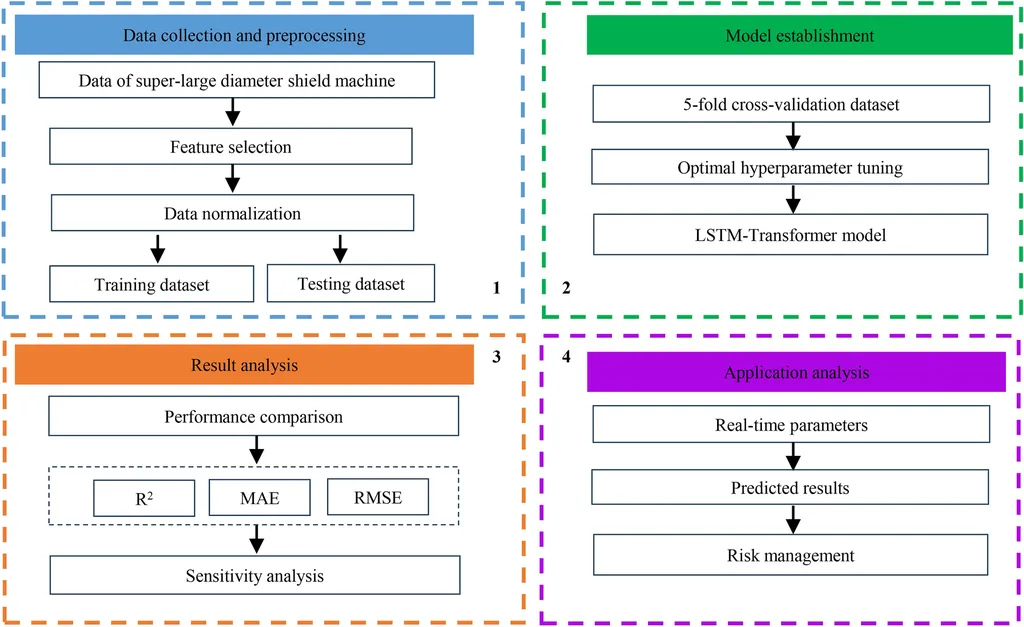In the ever-evolving world of urban infrastructure, the construction of metro systems has become a linchpin for economic growth and urban mobility. However, the very process that propels cities forward can also pose significant challenges, particularly when it comes to predicting and managing ground settlement around shield construction sites. A recent breakthrough in this area, published in the journal *Advances in Civil Engineering* (translated from Chinese as *Advances in Civil Engineering*), promises to revolutionize how engineers approach this critical issue.
ZongYang Li, a researcher at the College of Architectural Engineering, has developed a novel settlement prediction model that addresses the limitations of traditional methods. “Traditional models often fall short in complex geological conditions and dynamic construction parameters,” Li explains. “Our new model incorporates a dynamic weight function and an asymptotic decay term, which significantly improves the accuracy of long-term settlement predictions.”
The model’s innovative approach dynamically adjusts the primary and secondary settlement components at different stages, reflecting the three-stage characteristics of settlement: acceleration, stabilization, and decay. This refinement is crucial for ensuring the safety and stability of construction projects, particularly in urban areas where the stakes are high.
One of the most compelling aspects of Li’s research is its practical application. The model has been verified using actual engineering monitoring data, demonstrating superior prediction accuracy and adaptability compared to traditional double exponential decay models. “Our model shows significant advantages, especially in long-term settlement prediction under complex geological conditions,” Li notes. “This can provide a more reliable theoretical basis and technical support for the prediction and control of settlement in metro shield construction.”
The implications for the energy sector are substantial. Accurate settlement prediction is not just about ensuring the structural integrity of metro systems; it’s also about minimizing disruptions and costs associated with construction. For energy companies involved in urban infrastructure projects, this model offers a tool to enhance precision and efficiency, ultimately reducing risks and improving project outcomes.
As cities continue to expand and metro systems become increasingly vital, the need for advanced predictive models will only grow. Li’s research represents a significant step forward in this field, offering a solution that is both innovative and practical. “This model can provide a more reliable theoretical basis and technical support for the prediction and control of settlement in metro shield construction,” Li emphasizes, highlighting its potential to shape future developments in urban infrastructure.
In an industry where precision and reliability are paramount, Li’s work stands out as a beacon of progress. As the construction sector continues to evolve, the adoption of such advanced models will be crucial in ensuring the safety and efficiency of urban development projects. For professionals in the energy sector, this research offers a glimpse into the future of construction technology, where data-driven solutions pave the way for smarter, safer, and more sustainable urban environments.

